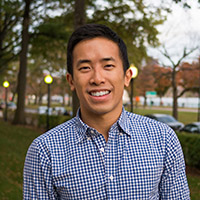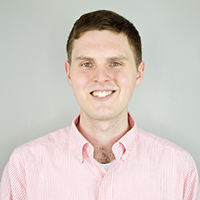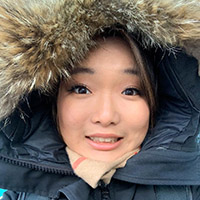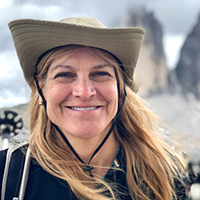Interdisciplinary @ Harvard SEAS
A tool for prospective students, industry, and academic collaborators
Harvard John A. Paulson School of Engineering and Applied Sciences (SEAS) consists of 148 faculty engaged in teaching and research across eight academic areas and 47 research areas.

This is Rachel. She recently graduated from the UC Berkley College of Engineering.
She has experience in electrical engineering, computer science, and mechanical engineering and
she wants to do research at Harvard that combines all these areas.
Follow along as she uses this tool to find a faculty advisor!
SEAS Faculty in Groups

From the dot visualization, Rachel notices from the academic clusters that Harvard SEAS has a large cluster
of faculty in computer science (included electrical engineering), and faculty clusters in materials science
and mechanical engineering and applied physics. This is encouraging.
Through the office location dropdown she notices the faculty clusters in two buildings, Maxwell Dworkin
and Pierce Hall, and makes a mental note to learn more about these locations.
At Harvard SEAS, we have academic areas instead of a traditional academic departments structure. Our faculty have a diversity of research interests within their academic areas. More importantly, they frequently conduct research across the boundaries of a wide range of academic areas.
Faculty Research Interests

From the filter dropdown menu, Rachel selects the research interest Bioinspired Robotics and Computing.
She compares the ten faculty in the results, and makes note of the four faculty who are also researching
artificial intelligence, Robert Wood, Cengiz Pehlevan, Demba Ba, and Radhika Nagpal. She hovers over their
red grid elements and notes their web address and full lists of research interests.
Next she filters the faculty by Computer Science and notes the large number of Computer Science faculty
researching artificial intelligence.
Faculty at SEAS collaborate with, or are members of, seven of Harvard’s professional schools, Harvard’s Faculty of Arts and Sciences, and other local universities such as MIT. They are also affiliated with a large number of local institutes, centers, and initiatives. These complex relationships create a highly interdisciplinary environment, allowing for insight and innovation.

Rachel searches the list of faculty for the four faculty that caught her attention in previously,
and compares their affiliations. She notices that, of the four, Robert Wood and Radhika Nagpal have
affiliations with several centers and institutes. She looks to see which other faculty are also affiliated
with those same centers and institutes. She has heard of the Wyss Institute and makes a note of it for
future reference.
Rachel selects Computer Science from the side menu and is surprised and excited by how highly connected
that academic areas is with other schools and centers at Harvard.
Rachel clicks on Robotics at Harvard and notes the four academic areas affiliated with that initiative.
The interdisciplinary work at Harvard SEAS is evident from the co-authorship of publications both within and across academic areas.
Faculty Coauthor Matrix

Rachel selects the Robotics and Control from the filter dropdown menu.
She notices that Robert Wood has published papers with both Conor Walsh and David Clarke.
She clicks on the highlighted squares to see the number of papers they’ve published together, notes the
words that appeared most frequently in those articles.
By selecting the dark blue color at the intersection of Robert Woods’s name she can see that this faculty
member has published at least 201 papers.
The collaborations between faculty at SEAS take place both formally and informally in the form of joint teaching, research, publications, and group research efforts.
Hi! If you don't see me, I'm loading :)
You Can Interact With Me!
Hover over a bar.
Select from the drop down menu.
Click on the faculty's picture.
Hover/click on nodes.
Click me to exit.

Rachel uses the network diagram to explore the relationships between Robert Wood, Radhika Nagpal,
Conor Walsh, and David Clark. She notices how well-connected Robert Wood is to other faculty through joint
membership in initiatives as well as through joint research efforts.
She decides to apply to a PhD program at Harvard SEAS with Robert Wood as her faculty advisor!
She clicks his photo and is directed to this professor’s contact information on the school website.
Find your professor on the map!
Search For a Faculty and Click Go to Office!
Fin! Thank you for reading!

Research Assistant at MIT

Math and Computer Science '21

Data Scientist at HMS

Director of Visual Communications
and New Media at Harvard SEAS
We created this data story for Harvard's COMPSCI 171: Visualization course in Fall 2020. All the code and data can be found in our GitHub repo. We would like to thank Jeff Licht for providing a dataset of faculty information from the Harvard SEAS website. Data for faculty publications were scraped from PubMed. Photos are courtesy of the Harvard SEAS Flickr account.
P.S. As you can see in the background pic, the new campus in Allston looks amazing... go check it out!